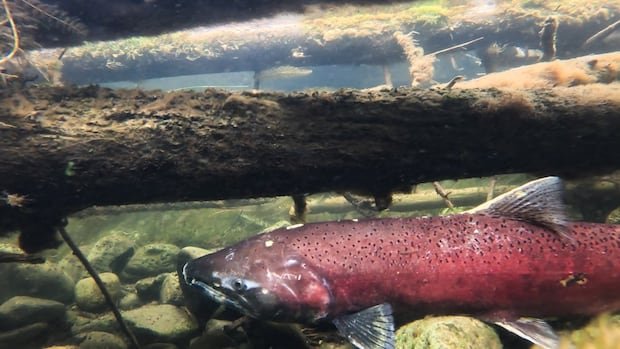Biologists in the United States are conducting research on the impact of a deadly parasite affecting chinook salmon in the Yukon River, aiming to integrate their findings into decision-making processes on both sides of the border in the future.
Zachary Liller, from the Alaska Department of Fish and Game, explained to CBC News the challenge of quantifying natural mortality linked to diseases like ichthyophonus, which can be fatal under specific conditions due to the extensive migration routes the endangered chinook salmon undertake to reach their spawning grounds.
Liller highlighted the absence of routine disease monitoring and analysis, emphasizing the need for developing a statistical tool to assess disease-related mortality in chinook populations for better fisheries management strategies.
The current assessment methods do not incorporate disease impacts, prompting efforts to create a new tool that could potentially influence decisions such as maintaining fishing restrictions.
Recent research activities conducted by biologists in Seattle involve exposing young chinook to parasite-infested fish flesh to study infection patterns and mortality rates, particularly focusing on the impact of ichthyophonus on the heart and muscle functions of the fish during their migration journey.
Despite suspicions that ichthyophonus could be a significant factor contributing to chinook mortality during migration, the exact extent of its impact remains uncertain, prompting collaborative research efforts to gain a more comprehensive understanding of the situation.
Research Methodology
Through a special permit, biologists collected wild chinook from a Yukon River tributary, transporting juvenile fish to laboratories for controlled experiments involving different water temperatures to observe parasite behavior in response to varying environmental conditions, including potential implications of climate change.
However, unexpected challenges have delayed the research progress, necessitating additional efforts to increase infection rates in experimental fish, with plans to conduct further exposure studies to enhance the accuracy of findings.
Paul Hershberger, from the U.S. Geological Survey’s fisheries research center, emphasized the importance of the ongoing research in providing valuable insights for regulating fishing activities and ensuring sustainable harvest practices.

